Rudolfo
Anaya, Author/Professor Emeritus, University of New Mexico. Critics
and followers refer to Mr. Ananya, who received the National Medal of
Arts in from President Bush in 2001, as the dean of Chicano literature.
Mr. Ananya’s other awards include Premio Quinto Sol National Chicano
Literary Award for his first novel Bless Me, Ultima and the PEN
Center West Award for his novel Albuquerque.
Tony Armendariz , Member, Federal Labor Relations Authority. Mr.
Armendariz was nominated by President George W. Bush and confirmed by
the Senate for a term expiring in 2005. Mr. Armendariz had previously
served on the Federal Labor Relations Authority from 1989 to 1997.
Before joining the agency, he worked as a general counsel of the
University System of South Texas.
Ricardo Artigas, CEO, GE Energy Services. Mr. Artigas has led
General Electric’s Energy Services business through unprecedented
growth. His strategy plan has resulted in 30 acquisitions and the
creation of three successful new businesses, contributing more than $1.4
billion in revenue. Previously, Mr. Artigas was CEO of GE Power Controls
(headquartered in Europe) and also a member of GE’s European
Management Board.
Dionel M. Aviles, Assistant Secretary for Financial Management
and Comptroller, Department of the Navy. Mr. Aviles manages an
annual budget of $99 billion, including acquisitions, construction,
personnel, and services. Prior to his appointment, Mr. Aviles was on
staff at the Armed Services Committee of the House of Representatives.
He also served previously as assistant director of the National Security
Division at the office of Management and Budget.
Ruben Barrales, Director of Intergovernmental Affairs, White
House. Mr. Barrales serves as the president’s liaison to governs,
and located elected officials. On the issue of homeland security, he has
emerged as a critical facilitator and organizer. Before joining the
White House staff, Mr. Barrales was CEO of Joint Venture: Silicon Valley
Network, a regional civic organization.
Hector
Barreto, Administrator, Small Business Administration. Mr.
Barreto directs business development programs to the nation’s
entrepreneurs. With a portfolio of business and disaster loans worth
more than $45 billion, the SBA is the country’s biggest financial for
small business. Before becoming SBA Administrator, Mr. Barreto owned an
insurance agency and served as vice-chair of the U.S. Hispanic Chamber
of Commerce.
Juan Carlos Benitez, Speacile Counsel, Immigration-Related Unfair
Enployment Practices, Justice Department. Mr. Benitez is the
highest-ranking Hispanic presidential appointee at the Justice
Department. Previously, he was an attorney at the firm Long Aldridge and
Norman. From 1995 to 1999, Mr. Benitez was associated general counsel
and legislative director at the Puerto Rico Federal Affairs
Administration, where he represented the governor of Puerto Rico before
Congress and federal agencies.
Jose Luis Betancourt Jr., Rear Admiral, U.S. Navy. The
admiral is top officer in the Mine Warfare Command, headquartered in
Corpus Christi, Texas. His command locates and destroys sea mines and
identifies and marks safe passage routs for ships. He also is
responsible for the development of the Navy’s underwater mines. Mr.
Betancourt has responsibility for 27 ships worldwide.
Jorge Bermudez, CEO, Citibank-Latin America. In April,
Citigroup announced that Mr. Bermudez would head up corporate banking
for Latin American and the Caribbean. He holds this position while
maintaining his role as CEO of Citigroup dates from 1975, when he joined
as an executive trainee. Mr. Bermudez is a member of the company’s
powerful management committee.
Roel
Campos, Commissioner, Securities and Exchange Commission. In
July 2002- in the aftermath of corporate accounting scandals- Mr. Campos
became the first Hispanic commissioner in the history of the SEC.
Previously, he was general counsel of El Dorado Communications, a
Spanish- language radio broadcaster. Mr. Campos also served as an
assistant U.S. Attorney in California from 1985 to 1989.
Raoul G. Cantero lll, Justice, Florida State Surpreme Court. Governor
Jeb Bush appointed Mr. Cantero to the court this year. Previously, he
was a partner in the Miami law office of Adorno & Yoss, specializing
in civil and criminal appeals. He has handled more than 250 appeals and
more than 100 oral arguments. Major clients include Aenta, BellSouth,
Coca-Cola, Lloyds of London, Humana, and government agencies.
Josefina G. Carbonell, Assistant Security for Aging,
Department of Heath & Human Services. Ms. Carbonell supervises
the federal government’s policy development and planning for services
to older people and their caregivers. Earlier, she was CEO of Little
Havana Activities and Nutrition Centers in southern Florida, which grew
to become the largest Hispanic geriatric health and human service
organization in the nation, serving 55,000 clients through 21
facilities.
Richard Carmona, Surgeon General, Health & Human Services
Department. Dr. Carmona has won acclaim as a trauma surgeon, public
health officer, healthcare executive and advocate of community health
and emergency preparedness. A Vietnam veteran with the Army Special
Forces, he moved to Tuscon in 1985 to launch the first trauma care
system in southern Arizona. The Senate confirmed him as surgeon general
in July.
Ida L. Castro, Commissioner, New Jersey Department of personnel. Ms.
Castro recruits employees for the Garden State’s government, including
police officers, firefighters, and civil servants. Ms. Castro also has
served as director of the Democratic National Committee’s Women’s
Vote Center, and from 1998 to 2001 she was chairwoman of the Equal
Employment Opportunity Commission in Washington, D.C.
Juan N. Cento, President, Latin American & Caribbean
Division, FedEx Corp. Mr. Cento supervises more than 3,000 employees
in 50 countries. Previously, he was responsible for FedEx’s strategy
and operations in Mexico and Central America. While headquatered in
Mexico City, he served as president of ANMEC (Asociacion Nacional
Mexicana de Empresas Courier). He was recently named chairman of the
International Kids Fund.
Miguel Contreras, Executive Secretary-Treasurer, Los Angeles County
Federation of Labor. Mr. Contreras is the first Hispanic elected
leader of the 107-year-old "County Fed"- an empire of nearly
400 local unions and more than 800,000 workers. Since Mr. Contreras
assumed his position at County Fed, more than 100,000 workers have
joined a union in Los Angeles. Mr. Contreras also sits on the board of
the Los Angeles Convention and Visitors Bureau.
Maria Contreras-Sweet, Secretary of Business, Transportaion, and
Housing, State of California. Ms. Contreras-Sweet manages a
budget of $12.4 billion and a workforce of more than 47,000. She
spearheaded lobbying for a $6.8 billion bill aimed at traffic relief.
She has championed efforts to create a Department of Managed Health Care
for the medical industry. Ms. Contreras-Sweet is the first Hispanic
female in California history to serve in the governor’s cabinet. ]
France Cordova, Chancellor, University of California, Riverside. Earlier
this year, Ms. Cordova, a nationally recognized astrophysicist, became
the first Hispanic woman to lead a UC campus. She had served earlier as
chief scientist at Nasa before heading to UC Santa Barbara in 1996,
where she was vice-chancellor for research. She also has held positions
at Pennsylvania State University and Los Alamos National Laboratory.
Carolyn Curiel, Editor Board Member, The New York
Times. Times Editor Collins appointed Ms. Curiel to the
prestigious editorial board in August. Previously, Ms. Curiel was a
senior fellow at the Pew Hispanic Center and a producer-writer for the
ABC News program Nightmare. From 1997 to 2001 she served as the
U.S. ambassador to Belize and as a speech-writer at the White House
during the Clinton administration.
Jose de la Torre, Dean, Chapman Graduate School of Business, Florida
International University. Mr. De la Torre is a leading expert on
globalization, organizational design, and strategic planning. Before
accepting his current position, he was a professor at the University of
California at Los Angeles, where he directed the Center for
International Business Education and Research from its inception in
1989. He has authored more than 40 books and articles on business.
Carlos Del Toro, Commanding Officer, USS Bulkeley. Mr. Del
Toro captains the Navy’s newest Burke class destroyer-the first
Hispanic to command such a ship. He joined the Navy in 1983 and has held
positions of chief engineer onboard the destroyer USS Preble,
propulsion assistant aboard the aircraft carrier USS America, and
executive officer aboard the guided-missile cruiser USS Vincennes.
Jane L. Delgado, CEO, National Alliance for Hispanic Health. Clinical
psychologist Jane L. Delgado serves as head of the alliance, the largest
and the oldest advocacy organization in Hispanic health issues. Ms.
Delgado is also the author of the book !SALUD! A Latina’s Guide to
total health (Rayo, $19.95). Previously, Ms. Delgado worked in the
office of the Secretary at the Department of Health and Human Services.
Alberto Diaz Jr., Rear Admiral, U.S. Navy. The commander
of the Naval Medical Center in San Diego, Mr. Diaz provides leadership
in military health care. As A lead agent of the TRICARE program, he
works to advance communication between the military health system and
civilian facilities to allow access by Navy personnel to a high-quality
integrated healthcare delivery system.
Nils J Diaz, Commissioner, Nuclear Regulatory Commission. As
a commissioner, Mr. Diaz participates in the formulation of policy and
granting of licenses for the construction and operation of nuclear power
plants. Before joining the NRC, he was professor of nuclear engineering
at the University of Florida, director of the Innovative Nuclear Space
Power Institute, and president of Florida Nuclear Associates.
Victor Espinoza, Jockey, National Thoroughbred Racing
Association. Mr. Espinoza came within one win of thoroughbred
racing’s Triple Crown in 2002, riding War Emblem to victories at both
the Kentucky Derby and Preakness Stakes. In, 2000, he rode 242 winners
for earnings of $13.2 million to rank seventh in the nation; in 2001, he
had 145 wins for $10.6 million.
Rudy Fernandez, Director of Grassroots Development, Republican
National Committee. Mr. Fernandez communicates and promotes the
agenda of President George W. Bush among all constituency groups. He
came to the position through his office as a press secretary for the RNC,
where he handled media relations in the Southwest region. Previously,
Mr. Fernandez was press secretary for Florida Congresswoman lleana
Ros-Lehtinen.
Katherine Fernandez Rundle, Miami-Dade County State Attorney,
State of Flaorida. Since 1993 Ms. Fernandez Rundle has served as
state attorney for greater Miami. Previously, she worked for 15 years as
chief assistant to Florida Attorney General Janet Reno. During her eight
years as counsel to the Miami-Dade County Grand Jury, she presents
hundreds of murder cases and oversaw reports that resulted in reforms in
juvenile justice and building codes.
Orlando Figueroa, Director, Mars Exploration Program, NASA.
Mr.
Figueroa assumed overall responsibility for the robotic exploration of
the Red Planet last year, after 22 years at the Maryland-based Goddard
Space Flight Center. Earlier, he was NASA’s deputy chief for systems
engineering. He is the recipient of the 2002 HENAAC (Hispanic Engineer
National Achievement Awards Conference) Pioneer Award.
Jose A. Fourquet, Executive Director, Inter-American Development
Bank. Mr. Fourquet supervises investment for the social and economic
development of Latin American and Caribbean. Previously, he worked for
Goldman Sachs as vice-president of the emerging debt market sales. He
was an operations officer with the Central Intelligence Agency from 1988
to 1994 and was a member of the secret Service from 1997 to 1998.
Adolfo A. Franco, Assistant Administrator, Bureau for Latin America
& the Caribbean, Agency for International Development. Mr.
Franco is a principal adviser on U.S. foreign aid in the Latin American
and Caribbean regions. His responsibilities include supervision of 16
missions in the Western Hemisphere. Before joining the agency for
International Development, Mr. Franco served as counsel to the majority
on the House International Relations Committee.
Lou Gallegos, Assistant Secretary for Administration, Agriculture
Department. Mr. Gallegos is an expert on this year’s controversial
Farm Security and Rural Investment Act. He is also an advocate for
Hispanic farmers (see "A Tough Row to Hoe" in this issue). He
has served as chief staff to both the governor of New Mexico and Senator
Pete Domenici, and as assistant secretary at the Interior Department.
Eugene
E. Garcia, Dean, College of Education, Arizona State
University. Before being appointed dean at ASU in July, Mr. Garcia
was dean of the graduate school of education at UC Berkeley. He was also
a senior officer in the Education Department from 1993 to 1995. In 1990
he served as co-director of the education Department’s Nation Center
for Research on Cultural Diversity and second-language learning.
Jeff Garcia, Quarterback, San Francisco 49ers. Mr. Garcia has
earned Pro Bowl honors for the last two years during his stint as
starting quarterback for the 49ers. He also organizes an annual golf
tourney to raise money for the Hispanic Scholarship Fund and has
participated in an HSF poster campaign. The tournament has raised nearly
$150,000 the last two years.
Juliet V. Garcia, President, University of Texas at Brownsville. Ms.
Garcia is the first Mexican-American woman in the nation to head a major
four-year university. In 1998, she implemented a pioneering partnership
between UTB, a four-year university, and Texas Southmost College, a
community college. The partnership consolidates resources and eliminates
transfer barriers for students in the Lower Rio Grand Valley.
Robert Garcia, Vice-president, CNN Radio. Mr. Garcia directs
operations for CNN Radio, a network with 2,000 affiliate stations.
Previously, he was executive producer at CBS Radio Stations News
Service, where he managed the Washington bureau for seven CBS news and
talk stations. He has served on the board of the Radio-Television News
Directors Association since 1992 and currently chairs the
association’s diversity task force.
Linda Garcia Cubero, Director for Business Performance, Electronic
Data Systems. At EDS, Ms. Garcia Cubero manages more than $3.5
billion in assets. Previously, she served as director of global supplier
relations at Case Corp. She was a member of the first class of women to
graduate from the Air Force Academy and was among the first group
inducted into the National Hispanic Engineering Hall of Fame in 1998.
Hector Garcia-Molina, Chairman, Department of Computer Science,
Stanford University. Mr. Garcia-Molina took over the chairmanship of
Stanford’s computer science department last year, after serving as a
member the President’s Information Technology Advisory Committee from
1997 to 2001. This year, Mr. Garcia-Molina won the HENAAC Award for
Outstanding Technical Achievement. He also sits on the board of Oracle
Corp.
Tony Garza, Commissioner, Texas Railroad Commission. Mr. Garza
was recently nominated by President Bush to be Ambassador to Mexico.
Earlier, Mr. Garza became the first Hispanic Republican in Texas history
to be elected to statewide office when he won as railroad commissioner
in 1998. When President Bush was governor of Texas, his first
appointment was to name Mr. Garza Texas secretary of state.
Angel Gomez, President, Hispanic National Bar Association. Mr.
Gomez is an attorney with the firm Seyfarth Shaw, where he specializes
in litigation, corporate transactions, and e-commerce law; in his spear
time, he’s president of the HBNA, which represents the interest s of
more than 25,000 Hispanic attorneys, judges, law professors, and law
students. The organization will celebrate its 30th anniversary at its
convention this month.
David P. Gonzales, U.S. Marshal, District of Arizona.
President
Bush appointed Mr. Gonzales marshal at the recommendation of Arizona
Senators John McCain and John Kyl. Mr. Gonzales is responsible for
protecting the federal judiciary, transporting federal prisoners,
protecting endangered witnesses, managing assets seized from criminal
enterprises, and pursuing fugitives. Earlier, Mr. Gonzales managed
criminal investigations at the Arizona Department of Safety.
Arthur J. Gonzalez, Judge, U.S. Bankruptcy Court. Mr. Gonzalez is
presiding at two of the largest Chapter 11 bankruptcies in history:
WorldCom and Enron. He recently allowed Enron Corp. to pay out $140
million in bonuses, but denied a motion to move the case to Texas. On
the Worldcom side, the judge approved $ 2 billion in financing to keep
WorldCom operating as it reorganizes.
Eduardo Gonzalez, Commissioner, Commission on Accreditation for Law
Enforcing Agencies. Mr. Gonzalez recently began a 3 year term at the
Commission on Accreditation for Law enforcement Agencies, an independent
authority created by four major law-enforcement membership
organizations. He began his career in 1965 with the Metro-Dade Police
Department in Miami. He later served as chief of police in Tampa And as
Director of U.S. Marshals serves.
Gilbert G. Gonzalez Jr., Deputy Undersecretary for policy &
Planning, Agriculture Department. As overseers of federal programs
for rural development, Mr. Gonzalez’s responsibilities include
strategic planning, outreach, and application of business and banking
practices to agriculture. He has been active in banking, housing, and
economic development in Texas since 1984 and is founding president of
the Community Development Loan Fund, a Texas-based multibank community
development corporation.
Juan
Gonzalez, President, National Association of Hispanic
Journalists. Mr. Gonzalez is a co-founder of UNITY: Journalists of
Color as well as a founder of NAHJ. His goals at NAHJ include
improvement in hiring opportunities for Hispanic print and broadcast
journalist and better coverage of the nation’s Hispanic community. Mr.
Gonzalez is also a reporter for the New York Daily News.
Dan Guerrero, Director of Athletics, University of California, Los
Angeles. Mr. Guerrero manages one of the nation’s most prestigious
athletic programs, with a budget of $40 million and 24 varsity teams. He
comes to UCLA from UC Irvine, where he served as athletic director since
1992. The Institute for International Sport named him the 1999 Sports
Ethics Fellow.
Lisa Guerrero, Sports Anchor, Fox Sports News. The Los Angeles
Times has called Ms. Guerrero "the hardest-working person in
sports." Her current job as update anchor for The Best Damn
Sports Show, Period is her latest assignment for Fox Sports. She’s
been anchor for the Regional Sports Report, and she is host for Charger
Magazine, a TV show in San Diego.
Sergio A. Gutierrez, Justice, Idaho Court of Appeals. Mr.
Gutierrez is one of three judges to handle appellate cases in the Idaho
judiciary. He also chairs the Idaho Supreme Court Fairness and Equality
Committee and is a member of the Idaho Supreme Court Drug Court
Coordinating Committee. Mr. Gutierrez was a Third District Court Judge
from 1993 until this year.
Isreal
Hernandez, Deputy to Senior Advisor Karl Rove, White House. Mr.
Hernandez has been a policy assistant to President Bush since his days
as Texas governor. He now holds an important position in the office of
senior advisor Karl Rove in the White House. Earlier, Mr. Hernadez was
the first person Mr. Bush hired when he decided to run for governor of
Texas.
Joe A. Hernandez Jr., President, Insurance Brokers & Agents of
the West. Mr. Hernandez is the first Hispanic President of IBA West,
which represents agents in California and the Pacific Northwest. He also
chairs the Diversity Task Force for the Independent Insurance Agents
&Brokers of America, a national association. He is a vice-president
of Hamman, Miller, Beauchamp, Deeble Inc., an agency in Long Beach,
California.
Jessica Herrera, Senior Counsel, Computer Crime & Intellectual
Property, Justice Department. Ms. Herrera Leads a team of
prosecutors who specialize in investigating and prosecuting perpetrators
of denial-of-service attacks, viruses, cyber-terrorism, cyber-extortion,
and other cyber-crimes. She is extensively involved in the
government’s initiatives on electronic evidence gathering and
infrastructure protection. A graduate of Harvard Law School, Ms. Herrea
has lectured and published extensively on cyber-crime and network
security issues.
Patricia Herrera, Fashion Editor, Vanity Fair. The
daughter of fashion designer Carolina Herrera, Patricia covers clothing
for Vanity Fair, the "chronicle of contemporary culture,
features, art, entertainment, politics, business, and the media."
Ms. Herrera was labeled a "Bright Young Thing" in the book Beautiful
Young Things by Brooke De Ocampo, and her own employer, Vanity
Fair, recently featured her as an "It" girl.
Frank
R. Jimenez, Chief of Staff, Housing and Urban Development
Department. Mr. Jimenez helps manage more than 9,000 employees and a
30 billion annual budget. He oversees hundreds of HUD programs designed
to help low-income U.S. residents with down-payment and closing costs.
At his swearing in, HUD Security Mel Martinez noted Mr. Jimenez’s
stint as chief of staff for Florida Governor Jeb Bush as preparation for
HUD service.
Marcos D. Jimenez, U.S. Attorney, District of South Florida Justice
Department. Before becoming a U.S. attorney, Mr. Jimenez was a
partner in the Miami office of the law firm White and Case, where he
specialized in white collar criminal defense, investigations, and
complex litigation. He was previously an assistant U.S. attorney in
South Florida, where he successfully prosecuted many nationally
significant cases.
Consuelo Castillo Kickbusch, President, Educational Achievement
Services. Retired Lt. Col. Consuelo Castillo Kickbusch is one of the
top speakers on today’s corporate circuit. She speaks with authority
as the highest-ranking Hispanic woman ever in combat support for the
Army. Her decorations include the Legion of Merit and four Meritorious
Service Medals. She retired from the military in 1996 to pursue her
entrepreneural dream of helping others.
Linda Martinez Lang, Executive Vice-President, Jack in the Box.
Ms. Lang is in charge of marketing, operations, human resources, and
information systems for the restaurant chain, which has more than 1,800
fast food outlets in 16 states. Ms. Lang served previously as
Vice-President of products, promotions, consumer research, and new
products. She has more than 15 years’ experience with the company.
George Lopez, Comedian, Warner Bros. Television. Mr. Lopez
headlines The George Lopez Show, produced by Warner Bros. and
airing on ABC. Previously, he was the first Hispanic to headline a
morning radio slot on an English-Language station in Los Angeles. He has
appeared in more than 70 television programs and movies, including the
Showtime film Fidel, and as a host on Univision’s Que Locos.
Nancy Lopez, Professional Golfer, LPGA. In 1978 her rookie year
on the LPGA Tour, Ms. Lopez won nine tournaments. This year she won PGA
of America’s First Lady Golf Award. A survey in the September 2002
issue of Golf magazine showed Ms. Lopez to be the overwhelming
favorite when women golfers were asked with whom they would like to
play. During her career, she has won 48 LPGA events.
Eufemia S. Lucero, Director, Human Resources Office of the Inspector
General U.S. Postal Service. Ms. Lucero has held numerous top
management positions with the USPS. Before her current position, she was
manager of the Executive Resources and Leadership Development Program at
USPS headquarters for two years. She also served in management for
operations, customer service, marketing, and human resources at the
Albuquerque District office.
Mike Madrid, Consultant, Futuro Strategies. Futuro Strategies
helps the Republican Party attract Hispanic voters. This year Mr. Madrid
organized a "Latino Summit" in Los Angeles to recruit
Hispanics to the party. He also serves as CEO of Action for Better
Cities, a nonprofit organization that helps municipalities with
political projects. Previously, he supervised California ballot
initiative campaigns with the public relations from Burson Marstellar.
Shirley A. Martinez, Deputy Assistant Secretary for Equal
Opportunity, Air Force. Ms. Martinez oversees all equal opportunity
programs for Air Force military and civilian personnel. In 1992 she
began as associate director of affirmative action with the Environmental
Protection Agency. She also chaired the District of Columbia Work Group,
a panel from 15 federal agencies that advised the Office of Personnel
Management on recruitment and retention of Hispanics.
Myra L. Martinez-Fernandez, Senior Policy Advisor, Patton Boggs.
Ms. Martinez-Fernandez offers strategic counsel to attorneys and clients
on public relations, communications, business development, public
policy, and lobbying, with a particular emphasis on Latin America,
Puerto Rico, and Hispanic-related issues. Previously, she served as a
senior consultant to Puerto Rico’s congressional office and the Puerto
Rico Federal Affairs Administration in Washington, D.C.
Patricia J. Mazzuca, Member, President’s Advisory Commission on
Educational Excellence for Hispanic Americans. Ms. Mazzuca is
immediate past co-chair of the commission, which advises the Secretary
of Education on policies to encourage Hispanic academic achievement. She
is also principal of Roberto Clemente Middle School in Philadelphia, a
model for multicultural education and technology programs in inner-city
schools. Ms. Mazzuca is an expert in bilingual education,
technology/curriculum integration, and educational assessment.
Fernando S. Mendoza, Chief, Division of General Pediatrics, Stanford
University. Dr, Mendoza conducts research on health issues for
Hispanic children. He is president of the Hispanic-Serving Health
Professions School, a consortium of 25 schools working to increase the
number of Hispanics in health professions, and is principal investigator
at the Health Careers Opportunity Program, a project to encourage
minority students to enter medicine.
Bob Menendez, Congressman, U.S. House of Representatives. The
fourth-term New Jersey congressman is currently running to become
chairman of the Democratic Caucus, the party’s policy-making committee
in the House of Representatives. In 1998 and again in 2000, he was
elected vice-chair of the caucus, making him the highest-ranking
Hispanic in Congress today. Mr. Menendez sits on the Transportation
& Infrastructure Committee and the International Relations
Committee.
Omar Minaya, General Manager, Montreal Expos. Named general
manager of the Expos this year, Mr. Minaya is the first Hispanic general
manager in Major League Baseball. He began his 18 years in baseball with
the Texas Rangers in 1985 as a coach in the Gulf Coast league, before
becoming the Rangers’ director of personnel and international scouting
in 1995.
Michael Montelongo, Assistant Secretary of the Air Force for
Financial Management, U.S. Air Force. Mr. Montelongo ranks as the
most senior Hispanic official in the Air Force. He serves as CFO for an
$80 billion budget, responsible for providing financial management and
analytical services necessary for the effective and efficient use of Air
Force resources. He also acts as principal adviser to the Secretary of
the Air Force for financial matters.
Alberto Jose Mora, General Counsel, U.S. Navy. Mr. Mora is the
chief legal officer for the Secretary of the Navy and the legal adviser
to the Secretary of the Navy. He oversees the legal work of the various
naval commands and their attorneys. Previously, he was an attorney with
the firm Greenberg Traurig, specializing in international law.
Ibra Morales, President, Television Stations Group Telemundo. Mr.
Martinez manages Telemundo’s owned-and-operated stations, including
major revenue generators in Los Angeles, Miami, and Puerto Rico.
Previously, he was president of Eagle Television Sales, a subsidiary of
KatzMedia/Clear Channel Group, where he built an organization to manage
sales for major broadcasters such as Hearst-Argyle Television, Scripps
Howard, and The New York times Co.
Elsa A. Murano, Undersecretary for Food Safety, Agriculture
Department. Ms. Murano oversees policies and programs of the Food
Safety & Inspection Service, the agency responsible for protecting
the public from food-borne diseases. Nearly 7,600 inspectors cover about
6,500 plants that process meat, poultry, and eggs. Previously, Ms.
Murano was the Sadie Hatfield Endowed Professor in Agriculture at Texas
A&M University.
Janet Murguia, Executive Vice-Chancellor for University Relations,
University of Kansas. Ms. Murguia oversees the university’s
communication with the public, including governmental affairs. She
serves on the board of the National Council of La Raza and Youth
Friends, a school-based mentoring program. Previously, she was deputy
manager of the Gore/Lieberman presidential campaign and worked at the
White House in various capacities starting in 1994.
Tommy Nuñez, Referee, National Basketball Association. Mr. Nuñez
is the first Hispanic referee in any major U.S. sport. His biography, Tommy
Nuñez, NBA Referee: Taking My Best Shot (Mitchell Lane, $10.95),
inspires young Hispanics to succeed. Each summer the Tommy Nuñez
National Hispanic Basketball Classic raises money for academic and
athletic activities for economically disadvantaged and high-risk youth.
Derek Parra, Speed Skater, Salt Lake City Winter Olympics. The
first Mexican-American to win a medal at the Winter Olympics, Mr. Parra
took the gold and set a world record for the 1,500-meter race in Salt
Lake City. He also won the silver in another event. His ice-skating
career began in 1996, after he won two international championships as an
inline skater.
Linda Pauwels, Captain, American Airlines. Ms. Pauwels, the first
Hispanic female to hold the rank of captain at American, is the only
woman on the National Communications Committee of the Allied Pilots
Association. Her comments have figured in aviation-related stories on
CNN, Fox, Telemundo, and Univision. She currently flies MD-80s on
domestic flights out of Los Angeles International Airport.
Tony Peña, Manager, Kansas City Royals. Mr. Peña became the
manager of the Royals in May. During his 18-year career on the baseball
field, he pleased hometown fans in Pittsburgh, Seattle, Cleveland,
Boston, and Houston. Mr. Peña played in nearly 2,000 games and was
five-time National League All-Star catcher and four-time winner of the
Rawlings Gold Glove Award.
Joe Perez, President, Hispanic National Law Enforcement Association.
HNLEA seeks the advancement of Hispanic and minority interests in the
administration of justice and the law enforcement profession. Mr. Perez
began his career with the Takoma Park (Maryland) Police Department,
where he was named Rookie of the Year. He later received the officer of
the Year Award from the State of Maryland.
Benigno Reyna, Director, U.S. Marshals Service. Mr. Reyna Heads
the federal government’s oldest law enforcement agency. He began his
career in 1976 with the Brownsville Police Department in Brownsville,
Texas. In 1997, he was appointed to the Texas Commission on Law
Enforcement Officer Standards and Education by then-Governor George W.
Bush. In 2001, Mr. Bush called him to serve in Washington D.C.
Claudio Reyna, Midfielder, U.S. National Soccer Team. As team
captain, Claudio Reyna helped lead Team USA to a semifinals berth at the
2002 FIFA World Cup. He also earned a place on the Mastercard All-Star
Team, the first U.S. player to do so. Professionally, Mr. Reyna signed
last year with Sunderland of the English Premier League for a transfer
fee of $6.8 Million.
Alfonso Robles, Chief Counsel, U.S. Customs Service. Mr. Robles
became the highest legal officer at Customs in 1999. He manages 110
attorneys and a budget of $13 million. From 1995 to 1998, he served as
first director of the Customs Management Center for the Caribbean area.
Before joining Customs, he clerked for an admiralty law firm in
Philadelphia and with the Federal Maritime Commission.
Daniel Rodriguez, "The Singing Policeman", New York City
Police Department. Since September 11, Mr. Rodriguez has stirred
audiences with his songs at various events, including New Year’s Eve
2002, the World Series, and Macy’s Thanksgiving Day Parade. He has
appeared on The Today Show, Live with Regis & Kelly, Good Morning
America, Larry King Live, and The Late Show with David Letterman.
Placido Domingo has invited Mr. Rodriguez to study with him.
Jennifer Rodriguez, Speed Skater, Salt Lake City Winter Olympics.
Ms. Rodriguez won two bronze medals at the Olympics after becoming the
first U.S. woman to earn a spot on the Olympic Team in all five
speed-skating events. After the Olympics, she won a silver medal and a
gold medal at the World Championships. She currently holds five U.S.
speed-skating records.
Victoria E. Rodriguez, Associate Professor, LBJ School of Public Affairs,
University of Texas, Austin. Ms. Rodriguez specializes in Mexican
and U.S. politics and women’s issues. She has taught at the University
of Texas at El Paso, the University of California at San Diego, and the
Instituto Tecnologico y de Estudios Superiores de Monterrey in Mexico.
She also has worked as a consultant for the World Bank.
Roberto Salazar, Administrator, Food & Nutrition Service,
Agriculture Department. As FNS Administrator, Mr. Salazar oversees
15 domestic nutrition assistance programs, including the Food Stamp
Program and the National School Lunch and School Breakfast programs. The
FNS has a budget of $40 Million. Mr. Salazar was the state director of
the department’s Rural Development agency in New Mexico before joining
the FNS.
Myrta "Chris" Sale, Deputy Adviser, External Affairs,
Inter-American Development Bank. External Affairs handles press and
publications for the bank. Previously, Ms. Sales was CFO at the Federal
Deposit Insurance Corp. She has also served as COO of the Small Business
Administration and as acting commissioner at the immigration and
Naturalization Service in addition to holding positions in the Office of
Management and Budget, Veterans Affairs Department, and National Public
Radio.
Col. Angela Salinas, Commanding Officer, 12th Recruiting
District, Marine Corps. Ms. Salinas, the highest-ranking Hispanic
female in the Marines, is commanding officer of a 10-state recruiting
district headquartered in San Diego. She served previously as assistant
chief of staff for the western recruiting region. Since enlisting in the
Marine Corps in 1974, she has earned many decorations, including the
Meritorious Service Medal and the Army Commendation Medal.
Maj. Gen. Ricardo S. Sanchez, Commanding Officer, 1st
Armored Division, U.S. Army. Mr. Sanchez leads "Old
Ironsides," the famous tank division that has fought in battles
from the North Africa campaign against General Rommel in World War II to
the Persian Gulf. He has received the Legion of Merit, Bronze Star,
Meritorious Service Medal with four Oak Leaf Clusters, Southwest Asia
Campaign Medal, and the Liberation of Kuwait Medal.
Joseph J. Santiago, Superintendent, New Jersey State Police. Mr.
Santiago is the first Hispanic to head the NJSP, a law enforcement
agency with 2,600 members and 1,200 staff professional. Earlier, he was
director of the Newark Police Department. He began his law enforcement
career in 1965 as a cadet with the City of Newark Police Department.
Fernando Soriano, Director, National Latino Research Center. Mr.
Soriano is principal investigator at the NLRC as well as an associate
professor of Human Development at California State University, San
Marcos. Last year he was named to the Census Bureau’s Advisory
Committee on the Hispanic Population. An expert on youth violence, he
serves on the National Committee for Latino Drug Abuse Research.
Mauricio Tamargo, Chairman, Foreign Claims Settlement Commission,
Justice Department. The FCSC is an independent agency that settles
claims of U.S. nationals against foreign governments. Before taking the
reins of the commission, Mr. Tamargo was staff director for the
International Operations and Human Rights Subcommittee of the House
International Relations Committee. He also served as chief of staff to
Florida Congresswoman Iliana Ros-Lehtinen.
Art Torres, Chairman, California Democratic Party. Former state
senator, Art Torres was elected chairman of the California Democratic
Party in 1996. He is credited with helping turn the party into a
national powerhouse; currently, all but one of the statewide officers in
California are Democrats. In 2000, he became president of the Walter
Kaitz Foundation, a nonprofit organization that promotes diversity in
the cable and broadband industry.
Alisa Valdes-Rodriguez, Novelist, St. Martin’s Press. Ms.
Valdes-Rodriguez is author of the book Dirty Girls Social Club,
due out in spring 2003 from St. Martin’s Press. She wrote Dirty
Girls in six days – and sold it for $500,000. Before penning the
book, she worked at the Boston Globe and the Los Angeles Times.
Producer Laura Ziskin (Spider-Man) has optioned Dirty Girls
for the big screen.
Gaddi H. Vasquez, Director, Peace Corps. Mr. Vasquez is the first
Hispanic director of the Peace Corps. He came to the agency from
Southern California Edison, where he handled public affairs. Previously,
he worked for California governors George Deukmejian, Pete Wilson, and
Gray Davis. The former policeman also founded the Orange County Hispanic
Education Fund, which has raised more than $1 million for scholarships.
Ian Vasquez, Director, Project on Global Economic Liberty, Cato
Institute. The Project on Global Economic Liberty seeks to
demonstrate that domestic policies are the primary causes of economic
progress. Mr. Vasquez is editor of Global Fortune; The Stumble and
Rise of World Capitalism (Cato Institute, $9.95) and co-editor of Perpetuating
Poverty: The World Bank, the IMF and the Developing World.
Previously, he worked at the Center for Strategic and International
Studies.
Massey Villarreal, Chairman, Republican National Hispanic Assembly.
The RNHA represents the interests of more than 7 million Hispanic
Republicans. Mr. Villarreal served as national Hispanic Vice-chairman of
the Bush/Cheney presidential campaign and deputy vice-chairman of the
Republican National Convention in 2000. The CEO of Houston-based
Precision Task Group, he also serves on the board of the Texas
Department of Economic Development and the e-Texas Commission.
Albert C. Zapanta, Chairman, Reserve Forces Policy Board. The
RFPB advises the Secretary of Defense on matters relating to reserve
military operations. Mr. Zapanta is CEO of the United States-Mexico
Chamber of Commerce, a Washington , D.C.-based nonprofit corporation
that promotes trade and investment between the two nations. He served as
assistant secretary at the Interior Department during the Reagan
administration.
Juan Carlos Zarate, Deputy Assistant Secretary for Terrorism &
Violent Crime, Treasury Department. Mr. Zarate coordinates
anti-terrorism efforts with the Treasury Department’s agencies. He
spearheaded the U.S. counter-terrorist strategy on the financial front,
including the organization of Operation Green Quest, the inter-agency
task force investigating terrorist funding. Mr. Zarate also is author of
the book Forging Democracy, about U.S. foreign policy in Central
America.
Patricia Zavella, Director, Chicano/Latino Research Center,
University of California, Santa Cruz. Ms. Zavella chairs the
University of California Committee on Latino Research, which develops
policies for the use and distribution of research funds on Chicano and
Latino issues. She is also director of the Chicano/Latino Research
Center, having been elected to the position in 1998. Her research
focuses on U.S.-Mexico immigration issues and feminist theory.
Heather Martinez Zona, President, New York Women’s Bar Association,
Ms. Zona is the first Hispanic female and the youngest elected president
of the NYWBA. She is also an associate in the firm Heller Ehrman &
McAuliffe, where she represents policyholders in disputes with insurance
companies. She founded the "Take Our Daughters to Work Day"
program, sponsored by the NYWBA and the U.S. Second Circuit Court of
Appeals.
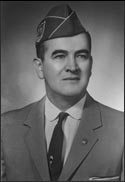
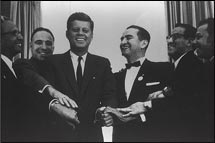

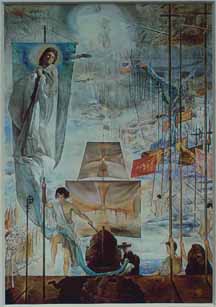

 AndrésRivero.com
AndrésRivero.com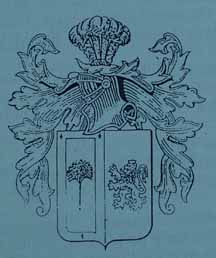
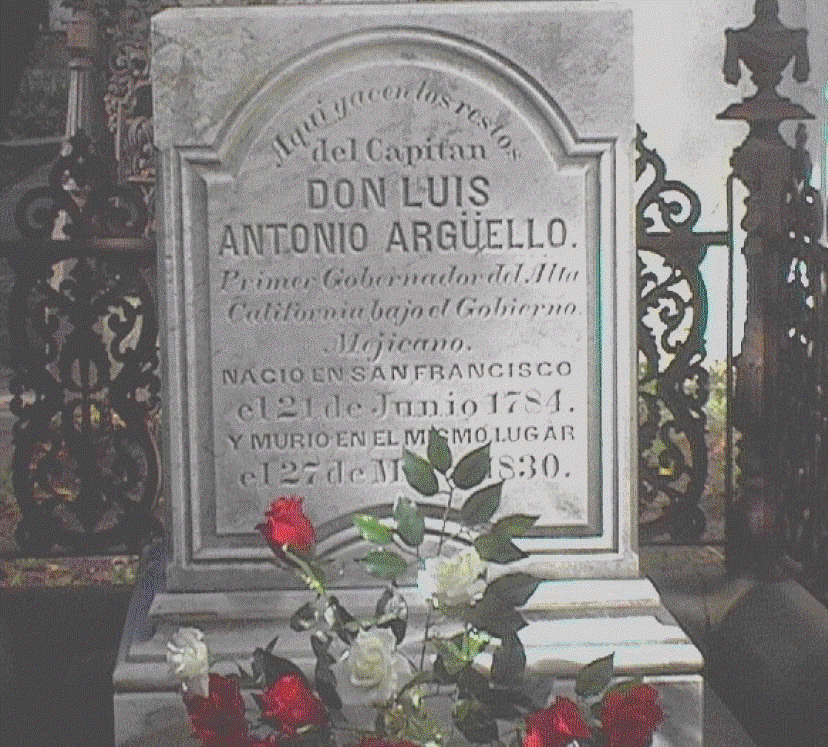
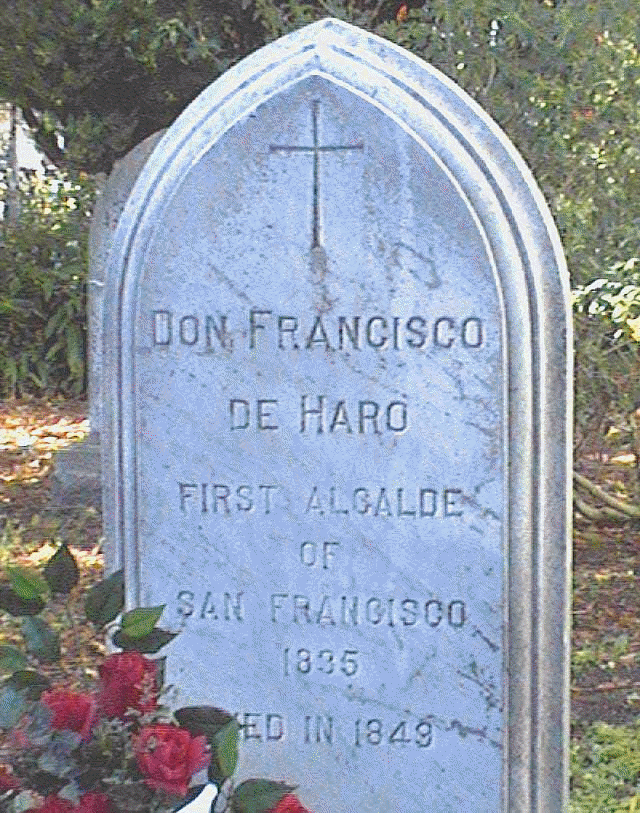
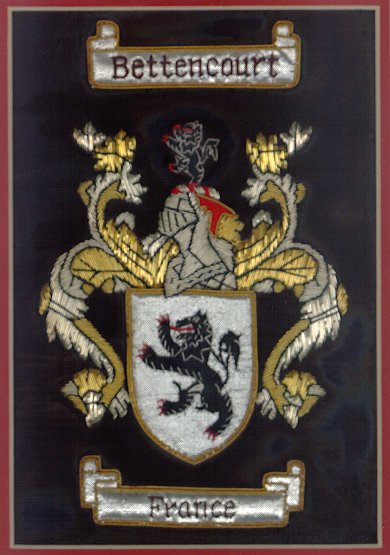



 ,
,